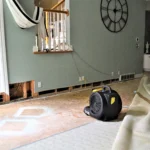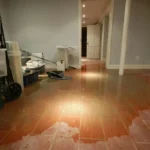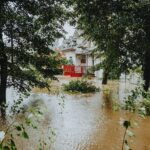Understand the full water damage restoration timeline day by day. Learn what to expect from inspection to final repairs.
Water damage can be a homeowner’s worst nightmare, striking suddenly and leaving behind a trail of destruction. Whether it’s a burst pipe, a leaking roof, or a natural disaster, the aftermath requires swift and effective action. One of the most pressing questions homeowners face is: How long will the restoration process take? Understanding the timeline can help set expectations and ensure a smoother recovery process.
Understanding the Water Damage Restoration Timeline
The duration of water damage restoration varies based on several factors, including the extent of the damage, the type of water involved, and the materials affected. Here’s a general breakdown:
Minor Damage (Category 1 – Clean Water)
- Duration: 1 to 3 days
- Description: Damage confined to small areas with clean water sources like broken pipes or overflowing sinks.
Moderate Damage (Category 2 – Gray Water)
- Duration: 7 to 14 days
- Description: Larger areas affected by water with some contaminants, such as dishwasher or washing machine overflows.
Severe Damage (Category 3 – Black Water)
- Duration: Several weeks to a few months
- Description: Extensive damage from highly contaminated water sources like sewage backups or floodwaters.
Note: These timelines are estimates. The actual duration can vary based on specific circumstances and should be assessed by professionals.
Day-by-Day Breakdown of the Restoration Process
Day 1: Emergency Contact and Initial Assessment
- Actions:
- Contact a certified water damage restoration company.
- Professionals assess the extent of the damage using moisture detectors and infrared cameras.
- Develop a restoration plan, including timelines and required equipment.
Day 2-3: Water Extraction and Drying Setup
- Actions:
- Use of industrial pumps and vacuums to remove standing water.
- Installation of air movers and dehumidifiers to begin the drying process.
- Removal of wet materials like carpets and drywall if necessary.
Day 4-7: Monitoring and Continued Drying
- Actions:
- Regular monitoring of moisture levels in walls and floors.
- Adjustment of equipment placement for optimal drying.
- Inspection for signs of mold growth.
Day 8-14: Cleaning and Sanitization
- Actions:
- Cleaning of all affected areas with antimicrobial treatments.
- Air purification to remove odors and airborne contaminants.
Day 15 and Beyond: Restoration and Repairs
- Actions:
- Repairing or replacing damaged structures like drywall, flooring, and insulation.
- Painting and finishing touches to restore the property to its pre-damage state.
- Final inspection to ensure all issues have been addressed.
Note: Severe cases may extend this timeline due to the complexity of repairs and potential mold remediation.
Factors Influencing Restoration Duration
Several variables can affect the restoration timeline:
- Extent of Damage: Larger areas and more severe damage naturally require more time.
- Type of Water: Black water (sewage) requires more extensive cleaning and safety precautions.
- Material Porosity: Porous materials like wood and drywall absorb water more readily and take longer to dry.
- Mold Presence: If mold is detected, remediation efforts can add days or weeks to the process.
- Insurance Processing: Delays in insurance approvals can stall restoration
Tools and Equipment Used
Professionals employ various tools to expedite the restoration process:
- Moisture Meters: Detect moisture levels in materials.
- Infrared Cameras: Identify hidden water pockets behind walls.
- Industrial Dehumidifiers: Extract moisture from the air and materials.
- Air Movers: Promote air circulation to speed up drying.
- HEPA Vacuums: Remove contaminants and prevent mold spores from spreading.
Tips for Homeowners
- Act Quickly: The sooner you address water damage, the less extensive (and expensive) the repairs.
- Document Everything: Take photos and keep records for insurance claims.
- Avoid DIY for Major Damage: Professional equipment and expertise are crucial for thorough restoration.
- Communicate with Insurers: Keep open lines of communication to ensure smooth claim processing.
Conclusion
Water damage restoration is a multi-step process that varies in duration based on the severity and specifics of the situation. By understanding the general timeline and factors involved, homeowners can better navigate the challenges and work towards restoring their homes efficiently. Always consult with certified professionals to ensure a safe and thorough restoration.
FAQS about Water Damage Restoration
1. How soon should I start water damage restoration after a flood or leak?
Answer:
Restoration should begin immediately ideally within 24–48 hours. Acting quickly prevents mold growth, structural damage, and other costly issues. Delays can worsen the problem and increase repair time and expenses.
2. Can water damage be completely fixed in one day?
Answer:
In very minor cases involving clean water and small areas, some drying and cleanup can be completed in a day. However, full restoration—including drying, sanitizing, and structural repairs—typically takes several days to weeks, depending on the damage
3. What factors affect how long restoration takes?
Answer:
Key factors include the type and extent of water damage, the materials affected (e.g., hardwood vs. tile), presence of mold, how quickly you respond, and the efficiency of the restoration team. Insurance claim approvals can also impact the timeline.
4. Do I need to move out during water damage restoration?
Answer:
Not always. For mild damage, you may be able to stay at home. But if the damage affects critical areas like the kitchen or bedrooms, or if there’s a health risk (like mold or sewage), temporary relocation may be necessary for safety and comfort.
5. Is water damage restoration covered by insurance?
Answer:
It depends on your policy. Most homeowner insurance plans cover sudden and accidental damage (like a burst pipe), but not gradual issues or flooding unless you have specific flood insurance. Always check with your provider to understand your coverage.




